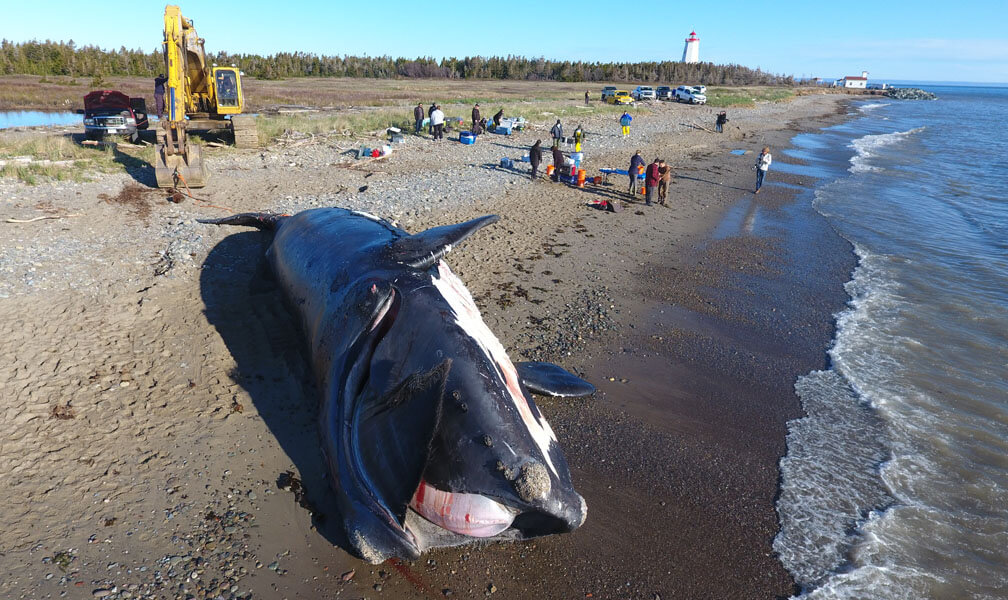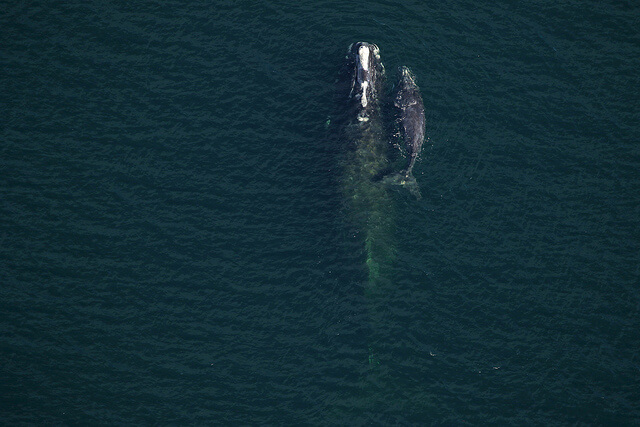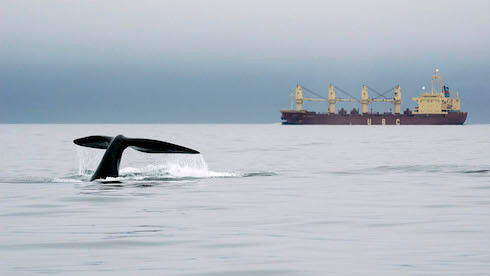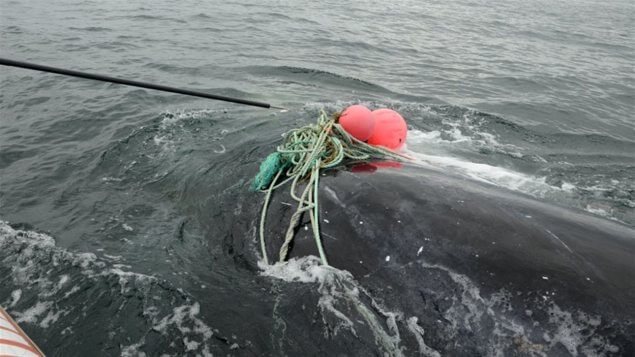Until recently, researchers still spoke of a population of some 400 North Atlantic right whales. But new estimates released last week suggest that there are actually just 356 individuals remaining! Experts attribute this drastic drop in the population to human activities. If this free fall continues, it may push the species toward the brink of extinction more quickly than expected.
The numbers aren't right
The figures unveiled on October 26 by the National Oceanic and Atmospheric Administration (NOAA), the US equivalent of Fisheries and Oceans Canada, sent shock waves through the scientific community at the Annual Meeting of the North Atlantic Right Whale Consortium (NARWC). After estimating the population to number 412 individuals in January 2018, authorities are now saying that in January 2019, they numbered just 366, a sharp decline of 11% in the span of one year. Worse yet, this population is believed to include just 94 breeding females.
Why such a decline? NOAA first explains that it has revised the 2018 figures using photo-identification. Many of the whales listed in the catalogue have not been seen for years and can now be considered dead, even if their carcasses have never been found. It is estimated that only half of all mortalities are accounted for by the discovery of a carcass. Thus, in January 2018, there were probably only 383 North Atlantic right whales left, a figure from which the 17 carcasses found in 2018 had to be subtracted.
How many today?
It is always easier to assess a population in hindsight, which explains why these figures give a snapshot of the species for January 2019. But how many individuals are left today, in the fall of 2020?
Since January 2019, 11 carcasses have been tallied and 4 whales have been observed as being sufficiently injured that scientists are doubtful of their survival. Recently, two severely entangled individuals were spotted off New Jersey. Lastly, of the 13 calves born in the past two years, one is presumed dead in early 2020 and another was found dead this summer, both from collisions.
Researchers attending the conference therefore agree that the current remaining population is roughly 356 individuals, even if these figures have yet to be refined.
Ironically, the annual meeting devoted to the species may have had more attendees devoted to saving these whales than the entire remaining population left in the ocean.
A grim future
Beyond the statistics, what worries researchers is how rapidly the North Atlantic right whale population is plummeting! Following decades of whaling – which decimated the species – the population slowly inched up to 481 individuals in 2011. Unfortunately, between 2011 and 2019, there were just 103 births vs. 218 mortalities – an average of 24 per year – all of which were attributable to human activity, states NOAA. The two main causes of mortality are ship strikes and entanglements in fishing gear.
These mortality rates are far too high to allow the population to recover. The organization believes that in order for the population to stabilize, mortality must not exceed one death per year. Conversely, at the current rate, the species will disappear quickly. In an interview with CBC News last week, New England Aquarium researcher Philip Hamilton estimated “there may not be any females of reproductive age left within the next 10 to 20 years.”
Time to act!
The good news, if there is one, is that unlike other endangered species, we know exactly what is killing North Atlantic right whales. The causes of mortality are well known – mainly collisions and entanglement in fishing gear – and are preventable. We can therefore act concretely and quickly to safeguard the species.
In Canada, ever since the 2017 mortality episode in the Gulf of St. Lawrence, important measures have been put in place to identify the presence of right whales, close fishing areas temporarily or permanently, and impose speed restrictions in areas where these whales are present. “The Canadian government has moved relatively quickly and the Canadian fishing community has moved pretty quickly,” says Scott Kraus, chair of the North Atlantic Right Whale Consortium. “Throughout the Gulf of St. Lawrence, I think we’re seeing significant improvements.” In 2020, no right whales were found dead or entangled in Canadian waters! However, it cannot be confirmed where those whales found entangled in the US had gotten caught.
Right whales still must be protected outside the Gulf, particularly along the US coast, where the crab and lobster fisheries are key industries. Initiatives to reconcile the interests of fishermen and North Atlantic right whales must succeed quickly if extinction of the species is to be averted. There is no more time to lose.









